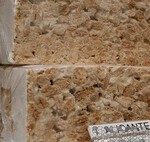Although Neanderthal brains were similar in size to modern humans, there has been a great deal of uncertainty as to whether the modern human and Neanderthal brains may have differed in their neuron production during development.
Only a few proteins show differences in the sequence of their amino acids (the building blocks of proteins) when modern human versions are compared with those of our extinct evolutionary relatives, Neanderthals and Denisovans. Very little has been learned about the biological importance of these differences for the development of the modern human brain. In fact, in addition to the fact that the modern human brain and that of the Neanderthal have similar sizes, so do the neocortex of one and the other. However, there are many doubts that the scientific community has been dragging about whether this similar size of the neocortex implies a similar number of neurons.
Specifically, in modern humans the TKTL1 protein contains an arginine at a certain position in the sequence, while in Neanderthal TKTL1 the amino acid at that position is lysine. In the fetal human neocortex, TKTL1 is found on neocortical progenitor cells, the cells from which all cortical neurons derive. Notably, the level of TKTL1 is highest in frontal lobe progenitor cells.
A recent study has sought to solve that mystery.
The research has been carried out by a team including Anneline Pinson and Wieland Huttner, from the Max Planck Institute for Molecular Cell Biology and Genetics (MPI-CBG) in Dresden; Svante Pääbo, from the Max Planck Institute for Evolutionary Anthropology in Leipzig; and Pauline Wimberger, from the Dresden University Hospital; in Germany all these institutions.
The team has found that the modern human variant of the TKTL1 protein, despite only differing by a single amino acid from the Neanderthal variant, increases the production of a type of brain progenitor cell, called basal radial glial cells, in the modern human brain. , compared to Neanderthal TKTL1.
During the developing phase of the brain, basal radial glial cells generate the majority of neurons in the neocortex, a part of the brain that is crucial for many cognitive abilities. Because TKTL1 activity is especially elevated in the frontal lobe of the fetal modern human brain, the researchers concluded that this single amino acid substitution for an anatomically modern-specific amino acid in the TKTL1 protein is behind this increased activity. production of neurons in the frontal lobe of the developing neocortex that occurs only in anatomically modern humans.
Microscopic image showing a dividing radial basal glial cell. It is a progenitor cell capable of generating neurons during brain development. The version of the TKTL1 protein that the anatomically modern human has, but not the Neanderthal version, increases the abundance of basal radial glial cells, which in turn leads to increased neuron production during brain development. (Image: Pinson et al., Science 2022/MPI-CBG)
In summary, during brain development, the anatomically modern human undergoes greater neuron production in the frontal lobe than the Neanderthal did, and this is due to a single amino acid change in the TKTL1 protein.
The study is titled “Human TKTL1 implies greater neurogenesis in frontal neocortex of modern humans than Neanderthals.” And it has been published in the academic journal Science. (Font: NCYT by Amazings)









![[Img #66966]](https://thelatestnews.world/wp-content/uploads/2022/09/Key-Neural-Difference-Between-Neanderthal-and-Modern-Human.jpg)



Add Comment